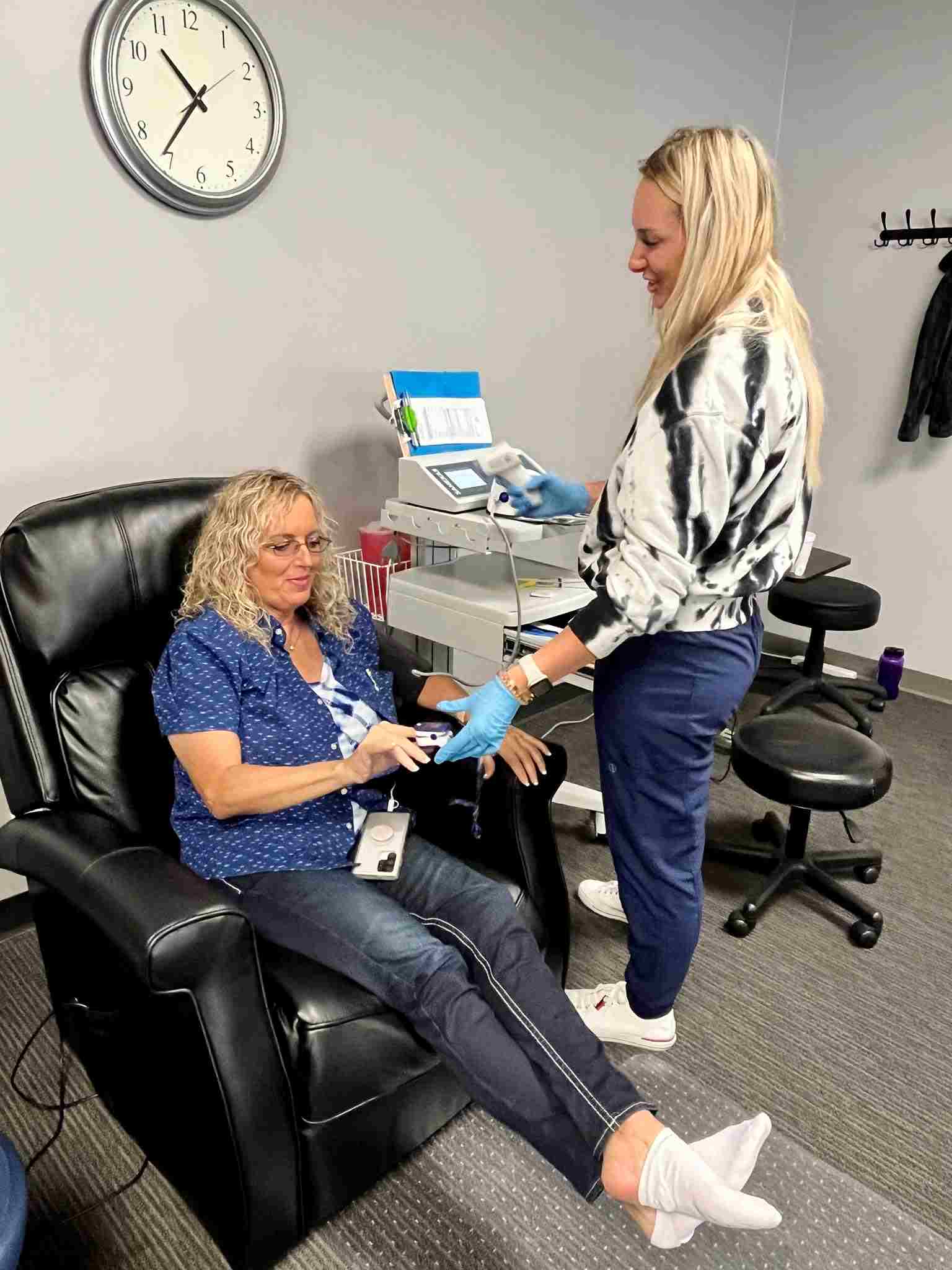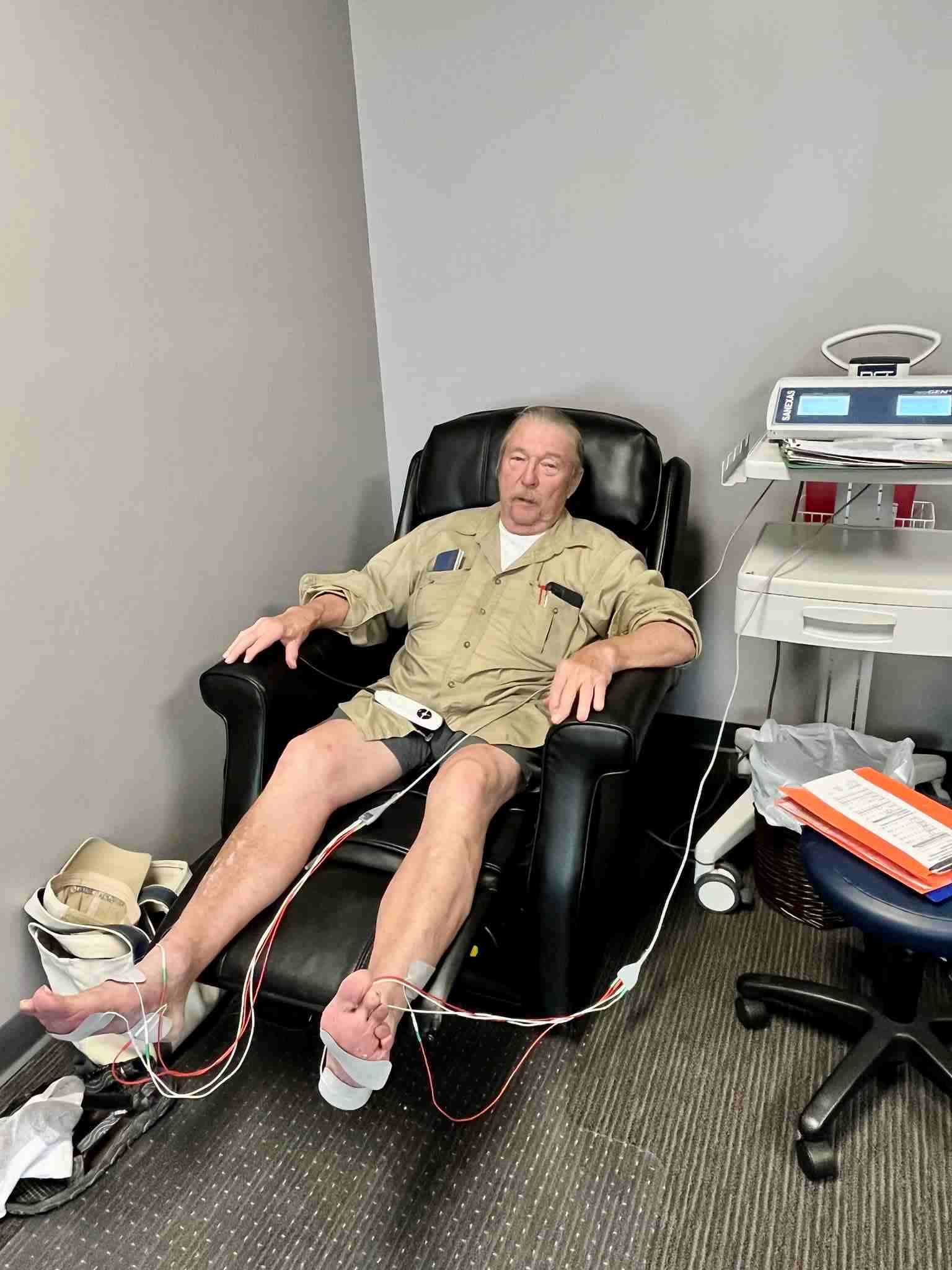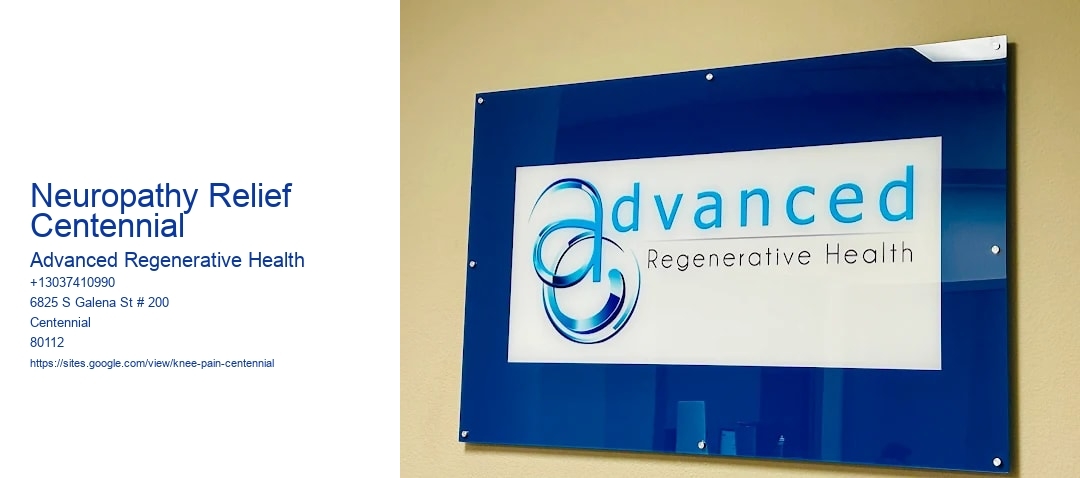Dietary and Nutritional Approaches for Neuropathy Relief
Neuropathy, a condition characterized by nerve damage leading to symptoms such as pain, tingling, and numbness, can significantly impact the quality of life. Centennial PRP For Knee Pain specialist . While medical treatments are available, dietary and nutritional approaches have gained attention as complementary strategies for neuropathy relief. In Centennial, as in many other places, individuals are increasingly exploring these natural avenues to manage their symptoms.
One of the primary dietary considerations for neuropathy relief involves maintaining optimal blood sugar levels, particularly for those with diabetic neuropathy. A diet rich in whole grains, lean proteins, and healthy fats, while low in refined sugars and carbohydrates, can help stabilize blood sugar levels. Knee Mobility Specialist Centennial CO This approach not only supports nerve health but also reduces the risk of further nerve damage. Incorporating foods with a low glycemic index, such as vegetables, legumes, and whole grains, can be particularly beneficial.
Antioxidants play a crucial role in combating oxidative stress, which is often linked to nerve damage. Foods rich in antioxidants, such as berries, leafy greens, and nuts, can help neutralize free radicals and protect nerve tissues. Additionally, omega-3 fatty acids, found in fish like salmon and mackerel, as well as flaxseeds and walnuts, have anti-inflammatory properties that can alleviate neuropathic pain and promote nerve healing.
Vitamins, particularly B vitamins, are essential for nerve health. Vitamin B12, in particular, supports nerve function and repair. Deficiencies in B12 and other B vitamins, such as B1 (thiamine) and B6, can exacerbate neuropathy symptoms. Including foods rich in these vitamins, such as eggs, dairy products, and fortified cereals, can be an effective strategy for those suffering from neuropathy.
Moreover, some minerals and supplements have shown promise in managing neuropathic symptoms. Magnesium, for instance, is known to support nerve function and may help reduce pain and muscle cramps associated with neuropathy. Similarly, alpha-lipoic acid, a powerful antioxidant, has been studied for its ability to improve nerve conduction and relieve pain in neuropathy patients.
Hydration is another critical factor often overlooked. Staying well-hydrated ensures that nutrients are efficiently transported to nerve cells, and toxins are effectively flushed out, promoting overall nerve health. Non Invasive Pain Management Centennial CO Drinking adequate water and consuming hydrating foods like cucumbers, watermelon, and oranges can support this process.

In Centennial, as individuals seek holistic approaches to manage neuropathy, dietary and nutritional strategies offer promising avenues for relief. By focusing on a balanced diet rich in essential nutrients and antioxidants, individuals can take proactive steps towards mitigating symptoms and enhancing their quality of life. While these approaches should complement, not replace, medical treatments, they empower individuals with a natural, sustainable means to address their neuropathic concerns. As always, consulting with healthcare professionals before making significant dietary changes is advisable to ensure these strategies align with individual health needs and conditions.
Physical Therapy and Exercise for Managing Neuropathy Symptoms
Living with neuropathy can be a daunting experience, characterized by persistent pain, tingling, and numbness that can significantly hinder ones quality of life. For those residing in Centennial and seeking relief from neuropathy symptoms, physical therapy and exercise have emerged as potent allies in the battle against this condition.
Neuropathy, often resulting from diabetes, chemotherapy, or other underlying health issues, primarily affects the peripheral nerves, leading to discomfort in the hands and feet. The primary goal of managing neuropathy is to alleviate these symptoms and improve overall functionality. While medication can provide some relief, physical therapy and exercise offer a holistic approach that addresses the root of the problem.
Physical therapy, tailored to individual needs, focuses on enhancing muscle strength, improving balance, and promoting flexibility. A physical therapist can design a specific regimen that targets the affected areas, helping to reduce pain and prevent further nerve damage. Techniques such as manual therapy, electrical stimulation, and balance exercises are commonly employed to stimulate nerve function and promote healing.
Exercise, on the other hand, plays a crucial role in managing neuropathy symptoms by improving circulation and reducing inflammation. Engaging in regular physical activity, such as walking, swimming, or yoga, can significantly enhance nerve health and alleviate discomfort. Exercise not only helps in maintaining a healthy weight but also releases endorphins, which are natural painkillers, thus providing relief from neuropathic pain.

Furthermore, exercising regularly can improve blood sugar control, which is particularly beneficial for individuals with diabetes-induced neuropathy. It also helps in reducing stress and anxiety, which can exacerbate pain perception. By incorporating a balanced exercise routine into their daily lives, individuals can experience a marked improvement in their symptoms and overall well-being.
In Centennial, individuals dealing with neuropathy have access to a range of physical therapy services and exercise programs specifically designed to address neuropathic symptoms. These services often include personalized treatment plans, group classes, and educational resources to empower individuals in managing their condition effectively.
In conclusion, while neuropathy can be a challenging condition to manage, physical therapy and exercise offer promising avenues for relief. By embracing a proactive approach and incorporating these strategies into their lives, individuals can regain control over their symptoms and enhance their quality of life. For those in Centennial, seeking out professional guidance and committing to a regular exercise regimen can be transformative in the journey toward neuropathy relief.
The Role of Medications in Neuropathy Treatment
Neuropathy, a condition characterized by nerve damage, often leads to symptoms such as pain, tingling, and numbness, which can significantly impact the quality of life. In Centennial, as in many other places, addressing neuropathy effectively involves a multifaceted approach, with medications playing a vital role in the treatment regimen. Understanding the role of medications in neuropathy treatment is crucial for both patients and healthcare providers aiming to manage this challenging condition.

Medications for neuropathy primarily aim to alleviate pain and improve function, thereby enhancing the overall quality of life. The choice of medication depends on the underlying cause of neuropathy, the severity of symptoms, and the individual patients health profile. One of the first-line treatments for neuropathic pain includes the use of anticonvulsants such as gabapentin and pregabalin. These medications work by stabilizing the electrical activity in the nerves, thereby reducing pain signals.
Non Invasive Pain Management Centennial CO
- PRP Knee Specialist Denver Tech Center
- Knee Mobility Specialist Centennial CO
- Non Invasive Pain Management Centennial CO
Antidepressants, particularly the serotonin-norepinephrine reuptake inhibitors (SNRIs) like duloxetine, and tricyclic antidepressants such as amitriptyline, are also commonly prescribed. These medications help modulate pain by influencing neurotransmitters in the brain that affect pain perception. Importantly, the use of these medications for neuropathic pain is not primarily due to their antidepressant effects but rather their ability to interfere with pain pathways.
In some cases, topical treatments such as lidocaine patches or capsaicin cream may be recommended. These applications provide localized relief by numbing the area or affecting nerve activity directly at the site of pain. For individuals with more severe symptoms, opioid medications might be considered, although their use is typically limited due to the potential for dependency and side effects.
Moreover, addressing the root cause of neuropathy is essential in treatment. For instance, in diabetic neuropathy, controlling blood sugar levels is crucial. Therefore, medications that manage diabetes not only help in controlling the primary disease but also prevent further nerve damage.
The role of medications in neuropathy treatment is complemented by lifestyle modifications and adjunct therapies. Physical therapy, a balanced diet, and regular exercise can help improve overall nerve function and reduce symptoms. Additionally, some patients find relief through alternative therapies such as acupuncture or massage therapy.
In Centennial, as elsewhere, a patient-centered approach is essential. Patients are encouraged to work closely with their healthcare providers to tailor a treatment plan that best suits their needs. Regular follow-ups allow for adjustments in medication and treatment strategies, ensuring optimal management of neuropathy.
In conclusion, medications play a pivotal role in the treatment of neuropathy, offering relief from debilitating symptoms and improving the quality of life. While they are an essential component of the treatment plan, they are most effective when used in conjunction with lifestyle changes and other therapies. Through comprehensive care and personalized treatment strategies, individuals in Centennial can find significant relief from neuropathy and regain control over their lives.
Alternative and Integrative Therapies for Neuropathy Pain Management
Neuropathy, a condition characterized by nerve damage, often results in debilitating pain and discomfort for those affected. Traditional medicine offers various treatments, yet many individuals seek alternative and integrative therapies to manage their symptoms more effectively. In Centennial, the interest in such holistic approaches has grown, reflecting a broader trend towards incorporating complementary therapies into conventional medical practices.
Alternative therapies for neuropathy pain management encompass a wide range of practices, each aiming to provide relief through natural or non-invasive means. Acupuncture, a cornerstone of Traditional Chinese Medicine, has gained popularity as a method to alleviate neuropathic pain. By stimulating specific points on the body, acupuncture is believed to enhance the flow of energy and reduce pain, offering a promising option for those seeking non-pharmaceutical relief.
Herbal medicine is another avenue explored by individuals with neuropathy. Supplements like alpha-lipoic acid, evening primrose oil, and certain vitamins have been touted for their potential to reduce nerve pain and improve nerve function. While scientific evidence varies, many find these natural supplements beneficial when integrated into a comprehensive pain management strategy.
Integrative therapies often involve a combination of alternative treatments with conventional medical approaches. This can include physical therapy, which helps to strengthen muscles, improve mobility, and reduce pain through targeted exercises. Additionally, techniques such as yoga and tai chi promote relaxation and stress reduction, which can indirectly alleviate neuropathic pain by improving overall well-being.
Mind-body interventions, such as meditation and mindfulness, are also integral to the integrative approach. These practices help individuals manage their pain by fostering a greater awareness of the mind-body connection and developing coping strategies to deal with chronic discomfort. Biofeedback and cognitive-behavioral therapy further support this process by teaching patients to modify their responses to pain, thereby improving their quality of life.
In Centennial, healthcare providers increasingly recognize the value of blending alternative and integrative therapies with standard medical treatments. This holistic approach not only addresses the physical aspects of neuropathy but also considers the emotional and psychological dimensions of living with chronic pain. By offering a more personalized and comprehensive pain management plan, patients can experience enhanced relief and a better overall quality of life.
As the popularity of these therapies continues to rise, ongoing research and collaboration between traditional and alternative medicine practitioners will be essential. This synergy will ensure that patients receive the most effective, evidence-based care possible, allowing them to navigate their neuropathy journey with greater comfort and confidence.
